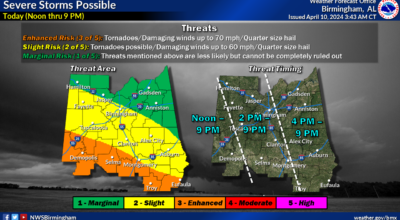Safety tips for dealing with snow and winter weather
Published 11:50 am Thursday, February 11, 2010
Here are safety tips for dealing with snow and winter weather:
Be prepared. Before snow or cold weather hits, make sure you have a way to heat your home during a power failure. Keep a multipurpose, dry-chemical fire extinguisher nearby when using alternative heating sources.
Keep on hand extra blankets, flashlights with extra batteries, matches, a first aid kit, manual can opener, rock salt and special needs items, such as prescriptions, diapers for babies, etc.
Stock a few days’ supply of water, required medications and food that does not need to be refrigerated or cooked.
Monitor the temperature of your home. Infants and persons over age 65 are especially susceptible to cold. If it’s not possible to keep your home warm, stay with friends or family or in a shelter if one is available.
Dress in several layers to maintain body heat. Covering up with blankets can also conserve heat.
Check the level of antifreeze and make sure the battery is good in your vehicle.
Have an emergency kit in your car that includes a cell phone, flashlight, jumper cables, sand or kitty litter for traction, ice scraper, snow brush, small shovel, blankets and warning devices.
Avoid driving in snow. If you must, let someone know your route and when you plan to arrive, so someone can alert authorities if you don’t get there.
Don’t sit in a parked car with the engine running unless a window is open.
If you are walking, dress in layers and wear boots with nonskid soles. Wear a bright scarf or hat or reflective gear so drivers can see you.
Walk on sidewalks if possible. If sidewalks are covered in snow and ice and you must walk in the street, walk against the flow of traffic and as close to the curb as you can.
Don’t wear a scarf or hat that blocks your vision or makes it hard for you to hear traffic.
When walking with babies or small children, dress them in bright or reflective clothing. always keep children — whether in a stroller or on foot — in front of you and as close to the curb as possible.
Before you step off the curb, make sure oncoming cars and trucks have come to a complete stop.




